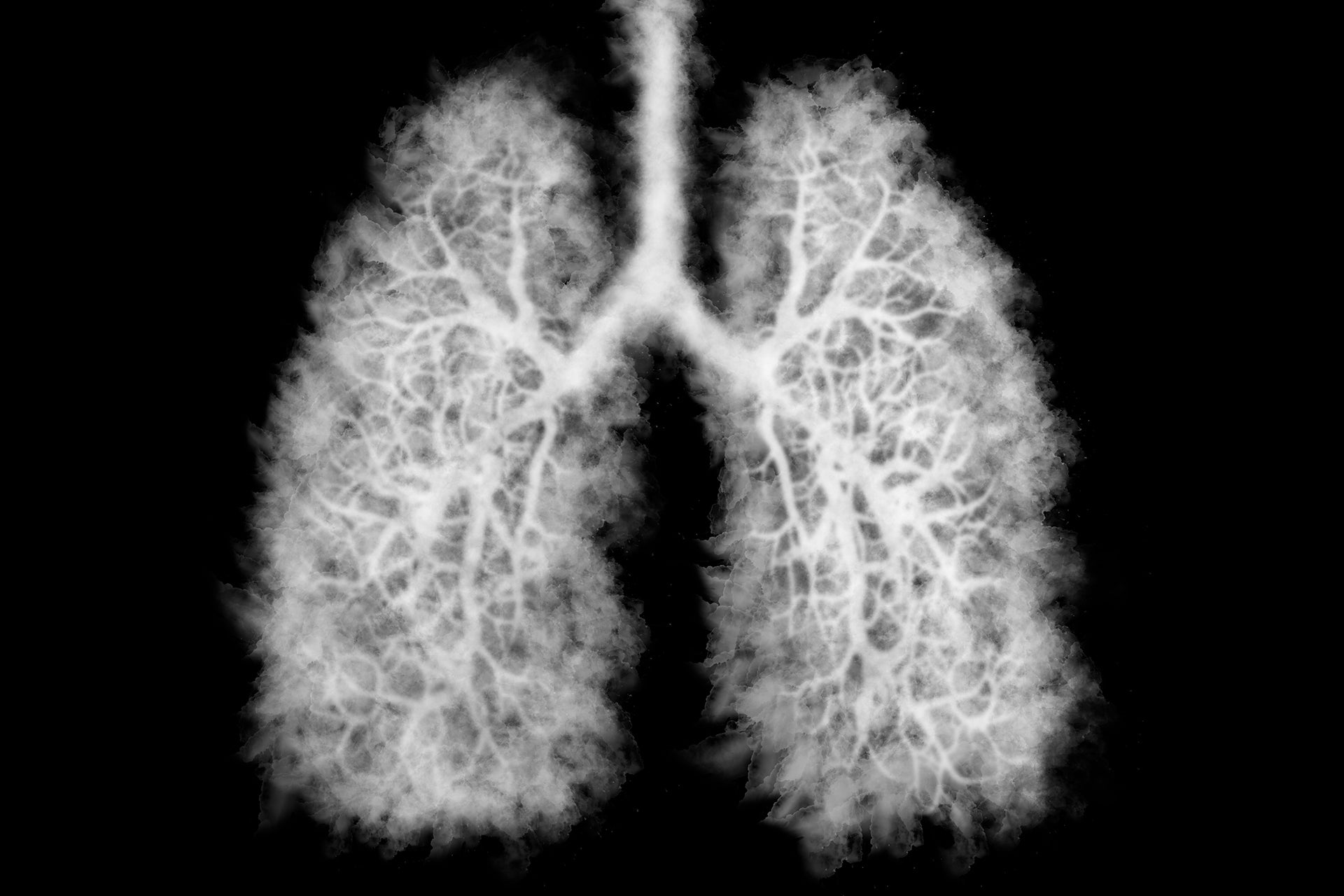
More omega-3, fewer respiratory events
Introduction
Omega-3 polyunsaturated fatty acids (n-3 PUFAs) possess properties that may be protective in chronic obstructive pulmonary disease (COPD). Using the Multi-Ethnic Study of Atherosclerosis (MESA), we hypothesized that higher plasma levels of n-3 PUFAs would be associated with a slower progression of percent emphysema on CT, a slower decline in lung function, and a lower risk of chronic lower respiratory disease (CLRD) events.
Methods
MESA is a longitudinal cohort of 6,814 U.S. community-dwelling adults, age 45-84 years at enrollment (2000-2002), with the most recent exam at 2016-2018. 6,573 participants had phospholipid fatty acids measured from baseline plasma samples. Participants underwent cardiac (2000-2007) and full-lung (2010-2018) CT scans, in which percent emphysema (<-950 Hounsfield Units) was assessed. Spirometry was performed at follow-up exams (2004-2018). Linear mixed models were used to examine associations of n-3 PUFA levels with change in percent emphysema and spirometry. Models were adjusted for age, sex, race/ethnicity, smoking status, cigarette pack-years, cigarettes/day, insurance type, height, weight, education, 18:2 trans fat level, COPD genetic risk score (GRS), principal components for ancestry, baseline ozone, nitric oxide, and temperature exposure (with time-interaction terms). Percent emphysema models were also adjusted for scanner type and radiation dose. Cox proportional hazard models were used to examine associations of n-3 PUFA levels with CLRD events (hospitalization and death). PUFA levels are expressed as % of total fatty acids.
Results
The mean (SD) plasma docosahexaenoic (DHA), eicosapentaenoic (EPA), and docosapentaenoic acid (DPA) levels were 3.8% (1.5), 0.9% (0.8), 0.9% (0.2), respectively. Over a mean follow-up of 12.0 (4.1) years, higher total n-3 (DHA+EPA+DPA) plasma levels were associated with a slower percent emphysema progression in a model adjusted for covariates and COPD GRS (-0.51% relative change in percent emphysema per log-transformed total n-3 increment, 95% CI -0.99 to -0.03). Associations were stronger among ever smokers versus never smokers (p for smoking interaction=0.01). n-3 PUFA levels were not associated with spirometry. Higher total n-3 PUFA levels were associated with a lower risk of CLRD event (adjusted hazard ratio (HR) 0.53 per log-transformed total n-3 increment, 95% CI 0.43 to 0.67). Among CLRD events, n-3 levels were associated with a lower risk of COPD-related events (adjusted HR 0.45, 95% CI 0.31 to 0.66) with associations stronger among ever smokers (p for smoking interaction=0.04).
Conclusion
Higher plasma n-3 PUFA levels were associated with a slower progression of percent emphysema and a lower risk of CLRD events among community-dwelling adults.
J. Kim1, P. Balte2, E. A. Hoffman3, E. Oelsner2, C. L. Pistenmaa4, E. Michos5, K. Watson6, A. Laine7, E. Angelini7, A. Wysoczanski8, K. D. Hinckley Stukovsky9, G. Burke10, N. Allen11, D. Jacobs Jr12, J. D. Kaufman13, M. Tsai14, R. Barr15;
1Medicine, University of Virginia School of Medicine, Charlottesville, VA, United States, 2General Medicine, Columbia University, New York, NY, United States, 3Univ of Iowa Carver Coll of Med, Iowa City, IA, United States, 4Pulmonary and Critical Care, Brigham and Women's Hospital, Boston, MA, United States, 5Medicine, Johns Hopkins University, Baltimore, MD, United States, 6Medicine, University of California Los Angeles, Los Angeles, CA, United States, 7Biomedical Engineering, Columbia University, New York, NY, United States, 8School of Medicine, Columbia University, New York, NY, United States, 9Biostatistics, University of Washington, Seattle, WA, United States, 10Medicine, Wake Forest University, Winston-Salem, NC, United States, 11Preventitive Medicine, Northwestern University, Chicago, IL, United States, 12Public Health, University of Minnesota, Minneapolis, MN, United States, 13Env/Occ Hlth, Medicine, Epidemiology, University of Washington, Seattle, WA, United States, 14Laboratory Medicine and Pathology, University of Minnesota, Minneapolis, MN, United States, 15General Medicine, Columbia University Medical Center, New York, NY, United States.
En savoir plus
https://www.atsjournals.org/doi/abs/10.1164/ajrccm-conference.2020.201.1_MeetingAbstracts.A4489
